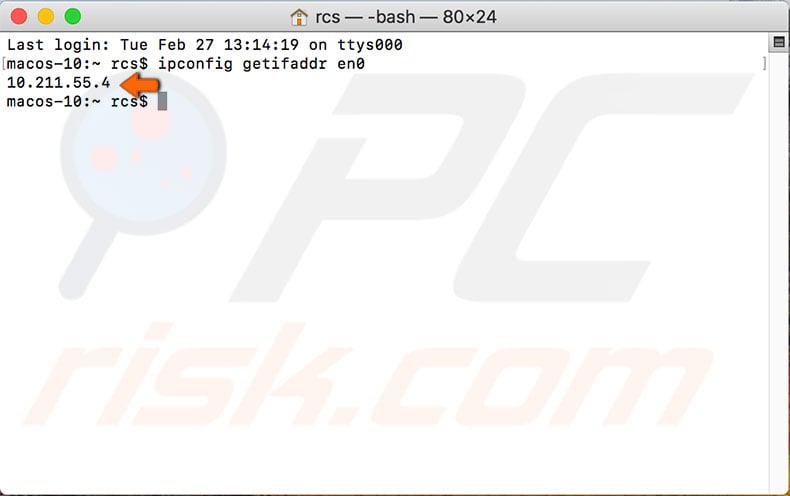

There’s a useful bit of information in the results of the arp command, which is called the MAC address – basically the physical hardware address of the network adapter on each machine, which can also help you identify each computer.
#Determine ip address mac terminal Pc
The machine at 192.168.2.104 is actually a PC (!) on my local network. The ARP command can be used to discover local network devices Type arp -a into Terminal and you’ll see a response similar to the following that lists all known devices. There is also an alternative command called arp (Address Resolution Protocol) which can be used to find out about every device on the local network. In this case only one machine on my home network has actually responded (on 192.168.2.101). Note however that some devices and computers may be configured not to respond to ping requests.Īfter running this command, I see the following output: Ping the special address to see what machines respond Now just enter this address into the ping command in Terminal, for example:Įvery device on your local network should respond to this ping. For example, my subnet address has the zero in the fourth position – so my “special” ping address will be 192.168.2.255. Now, you need to look for any 0 values in the subnet mask, turn them into 255, and put them into the same position in the IP address field, and then ping that network address.

Open System Preferences and click the Network icon, then select the TCP/IP tab at the top as shown below: Your IP and MAC addresses are shown in Network settings Unfortunately, OS X does not include this version, but there is another way to get most devices to respond.īoth of these items can be found in the Network section in System Preferences. Some versions of UNIX (on which OS X is based) include a special version of ping which lets you send a broadcast message that every device receiving it will respond to.

The ping command just repeats forever until you press CTRL + C to stop it. In general, the further away the machine is (or the slower the network it’s connected to), the higher the ping times will be. The items of particular interest are the IP address (which is the dotted decimal address in four parts that identifies a machine on the network) and the response time in milliseconds, which is how long the ping took to complete. Something akin to the following should be displayed: Use the Ping command in Terminal to see all the devices present on your local network Just type ping (and hit Enter) or any other website address and you should see some results appear that indicate the website (or individual server) is responding. Once Terminal is open, you can try out the ping command by typing an example at the command prompt. The first thing to do is open Terminal from within the Applications -> Utilities folder, or just type Terminal into Spotlight ( CMD + SPACEBAR) and click on the icon when it’s found.


 0 kommentar(er)
0 kommentar(er)
